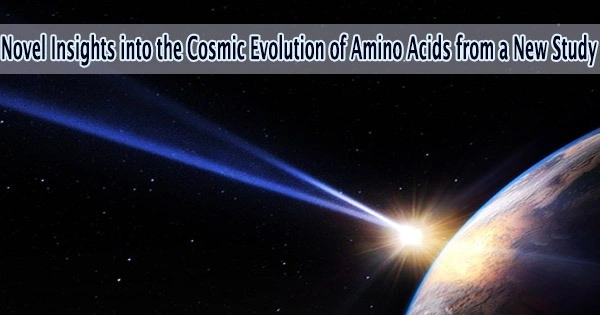To shed light on the beginnings of life on Earth, scientists run computational simulations for biological compounds found in meteorites. The only version of every biological amino acid found on Earth is left-handed, although the underlying cause of this discovery is unclear.
Japanese researchers recently discovered fresh information regarding the cosmic origin of this asymmetry. They performed physics-based simulations using the amino acids present in the Murchison meteorite as a basis, and the results suggested that the precursors to biological amino acids may have controlled amino acid chirality throughout the early galaxy evolution.
If you look at your hands, you will notice that they are mirror images of each other. You will never be able to completely superimpose one hand over the other, no matter how hard you try to flip and rotate it.
Many molecules have a similar property called “chirality,” which means that the “left-handed” (L) version of a molecule cannot be superimposed onto its “right-handed” (D) mirror image version. Even though chiral molecules, also known as “enantiomers,” have the same chemical formula in both of their forms, how they interact with other molecules, particularly other chiral molecules, can differ greatly.
Interestingly, one of the many mysteries surrounding the origin of life as we know it has to do with chirality. It turns out that biological amino acids (AAs) the building blocks of proteins on Earth appear only in one of their two possible enantiomeric forms, namely the L-form.
However, if you synthesize AAs artificially, both L and D forms are produced in equal amounts. This suggests that, at some early point in the past, L-AAs must have come to dominate a hetero-chiral world. This phenomenon is known as “chiral symmetry breaking.”
Taken together, our findings suggest that ANs underlie the origin of the homochirality. More specifically, irradiating AN precursors with R-CP Lyα radiation lead to a higher ratio of L-enantiomers. The subsequent predominance of L-AAs is possible via reactions induced by water molecules and heat.
Dr. Mitsuo Shoji
Against this backdrop, a research team led by Assistant Professor Mitsuo Shoji from the University of Tsukuba, Japan, conducted a study aimed at solving this mystery. As explained in their paper published in The Journal of Physical Chemistry Letters, the team sought to find evidence supporting the cosmic origin of the homochirality of AAs on Earth, as well as iron out some inconsistencies and contradictions in our previous understanding.
“The idea that homochirality may have originated in space was suggested after AAs were found in the Murchison meteorite that fell in Australia in 1969,” explains Dr. Shoji. Curiously enough, in the samples obtained from this meteorite, each of the L-enantiomers was more prevalent than its D-enantiomer counterpart.
According to a widely accepted theory, the star-forming regions of our galaxy’s ultraviolet circularly polarized light (CPL) may have caused the imbalance. Scientists verified that this type of radiation can, indeed, induce asymmetric photochemical reactions that, given enough time, would favor the production of L-AAs over D-AAs. However, the absorption properties of the AA isovaline are opposite to those of the other AAs, meaning that the UV-based explanation alone is either insufficient or incorrect.
Against this backdrop, Dr. Shoji’s team pursued an alternate hypothesis. Instead of far-UV radiation, they hypothesized that specifically the CP Lyman-α (Lyα) emission line, a spectral line of hydrogen atom that permeated the early Milky Way, in fact, induced the chiral asymmetry.
Moreover, instead of focusing only on photoreactions in AAs, the researchers investigated the possibility of the chiral asymmetry starting in the precursors to the AAs, namely amino propanals (APs) and amino nitriles (ANs).
Through quantum mechanical calculations, the team analyzed Lyα-induced reactions for producing AAs along the chemical pathway adopted in Strecker synthesis. They then noted the ratios of L- to D-enantiomers of AAs, APs, and ANs at each step of the process.
The results showed that L-enantiomers of ANs are preferentially formed under right-handed CP (R-CP) Lyα irradiation, with their enantiomeric ratios matching those for the corresponding AAs.
“Taken together, our findings suggest that ANs underlie the origin of the homochirality,” remarks Dr. Shoji. “More specifically, irradiating AN precursors with R-CP Lyα radiation lead to a higher ratio of L-enantiomers. The subsequent predominance of L-AAs is possible via reactions induced by water molecules and heat.”
Thus, the work advances our understanding of the intricate development of our own biochemistry. The team emphasizes that additional research on ANs needs to be done on future asteroids and comet samples in order to corroborate their findings.
“Further analyses and theoretical investigations of ANs and other prebiotic molecules related to sugars and nucleobases will provide new insights into the chemical evolution of molecules and, in turn, the origin of life,” concludes an optimistic Dr. Shoji.





